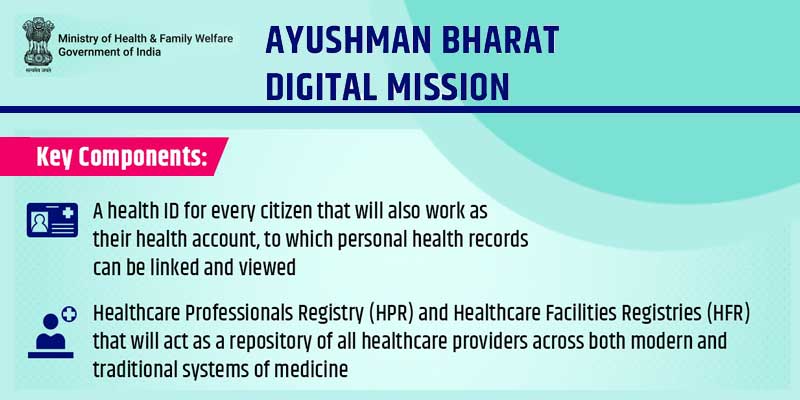- India
- Sep 28
Explainer / Ayushman Bharat Digital Mission
Prime Minister Narendra Modi launched the Ayushman Bharat Digital Mission, under which a digital health ID will be provided to citizens that will carry their health records.
The PM noted that India has nearly 130 crore Aadhaar users, 118 crore mobile subscribers, 80 crore internet users and 43 crore Jan Dhan bank accounts.
Key points on Ayushman Bharat Digital Mission:
• It was originally called the National Digital Health Mission.
• Citizens will only be a click away from accessing health care facilities.
• Under the mission, citizens will get a digital health ID.
• Health is a state subject, but the National Health Mission will work closely with the states on Ayushman Bharat Digital Mission.
• The pilot project of the Ayushman Bharat Digital Mission was announced by Prime Minister from the ramparts of the Red Fort on August 15, 2020 and was in six Union Territories. Now it will be rolled out nationwide.
• Its nationwide rollout coincides with the National Health Authority celebrating the third anniversary of the Ayushman Bharat Pradhan Mantri Jan Arogya Yojana (AB-PMJAY).
How did the concept originate?
The National Health Policy (NHP) 2017 has the following goal:
“The attainment of the highest possible level of health and wellbeing for all at all ages, through a preventive and promotive health care orientation in all developmental policies, and universal access to good quality health care services without anyone having to face financial hardship as a consequence.”
In a follow-up of the NHP’s specific goals for adopting digital technologies, the ministry of health and family welfare constituted a committee headed by J. Satyanarayana to develop an implementation framework for the National Health Stack. This committee produced the National Digital Health Blueprint (NDHB), laying out the building blocks and an action plan to comprehensively and holistically implement digital health.
Taking forward the NDHB, this document describes the broad context, rationale, scope, and implementation arrangements for a digital ecosystem for health care services across the country.
Main components of the mission
• A health ID for every citizen that will also work as their health account, to which personal health records can be linked and viewed with the help of a mobile application.
• A Healthcare Professionals Registry (HPR) and Healthcare Facilities Registries (HFR) that will act as a repository of all healthcare providers across both modern and traditional systems of medicine. This will ensure ease of doing business for doctors, hospitals and healthcare service providers.
• A sandbox, created as part of the digital mission will act as a framework for technology and product testing that will help organisations, including private players, intending to be a part of the National Digital Health Ecosystem become a health information provider or a health information user or efficiently link with building blocks of the mission.
• Sandbox in computing terms is a testing environment in a computer system in which new or untested software or coding can be run securely without affecting the application, system or platform on which they are run.
• This mission will also create interoperability within the digital health ecosystem, similar to the role played by the Unified Payments Interface (UPI) in revolutionising payments.
How will the unique digital health ID be generated?
• It will be voluntary. In order to issue the ID, the system will collect certain basic details including location. The health ID will be used for purposes of uniquely identifying persons, authenticating them, and threading their health records.
• Health records of every citizen will be digitally protected.
• It will enable access and exchange of longitudinal health records of citizens with their consent.
Manorama Yearbook app is now available on Google Play Store and iOS App Store

